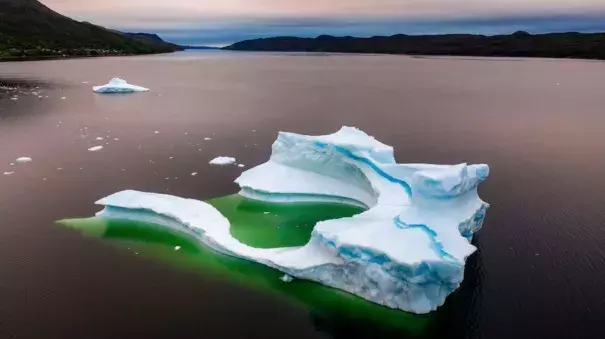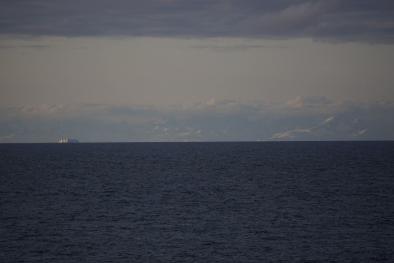How Icebergs are Connected to Climate Change—and Tourism

Signals Summary: Ice sheet melt in Greenland contributes to sea level rise and it affects global weather formation and ocean currents. There are already signs that the Atlantic part of the large-scale ocean circulation known as thermohaline circulation is weakening due to climate change.
Article Excerpt: Recent research has confirmed that a changing climate as Earth warms is resulting in a significant increase in the loss of ice from the Greenland Ice Sheet.
...
The most direct connection to that increase in loss of ice is a rise in sea level. Scientists have shown that since 1992, nearly 4 trillion tons of Greenland ice have entered the ocean, equivalent to roughly a centimeter of global sea-level rise. In the 2019 NOAA Arctic Report Card it was noted that the discharge from most regions of Greenland has been approximately steady or declining when averaged over the past decade. In between high discharge rates in 2010-2012 and again in 2019, there was a period of relative stability. This is a very complicated picture, and more research is needed to determine the complex roles that melting ice and iceberg calving play in the overall loss of ice from the largest island in the world.
Other research suggests that melting sea ice and icebergs could play another very important role in climate change. It’s a complicated dance that is explained in a writeup by the University Corporation for Atmospheric Research. The dance begins with ocean currents, where water moves through the Atlantic as part of the global thermohaline circulation, also known as the global ocean conveyor belt. The thermohaline circulation in the Atlantic plays an important role in supplying heat to the polar regions. This conveyor belt operates because of two important properties of water; colder water is denser than warmer water, and saltier water is denser than fresh water. Warm surface water from the Equator travels north into colder regions and cools down. As it does, it gets denser and sinks deep into the ocean.
With a warming globe, more melting icebergs and Arctic sea ice could change this pattern. Melting ice means more fresh water to make the surface water in the ocean less salty and less dense, a process called freshening. If the surface water becomes less dense, it can’t sink, therefore slowing down or disrupting the global ocean conveyor belt. If you stop that circulation, then it could actually lead to a cooling in Western Europe even as the rest of the globe continues to warm up. That’s because right now ocean currents carry warmth from the tropics up to the high latitudes, keeping places like England and other parts of northern Europe milder than other places at the same latitude. Some estimates suggest that if the global ocean conveyor belt were to stop completely, average temperatures in Northern Europe could cool by up to 5–10°C (9–18°F). Even a major slowing of the circulation could have a big impact on regional climate.
There is evidence in the distant past for this kind of freshening and cooling. During the last ice age, there were periods called Heinrich events in which vast numbers of icebergs flowed into the North Atlantic from the Laurentide Ice Sheet, which covered most of present-day Canada. It appears these icebergs helped to freshen the North Atlantic and disrupt the global thermohaline circulation enough to cool the climate of Europe and the North Atlantic, perhaps by more than 2°C (3.8°F).
There are already signs that the Atlantic part of the thermohaline circulation (also called the Atlantic Meridional Overturning Circulation or AMOC) is weakening. In its 2018 report on the impacts of 1.5°C of global warming, the Intergovernmental Panel on Climate Change found that “it is more likely than not that the AMOC has been weakening in recent decades,” as surface waters over the North Atlantic are showing a cooling trend. The panel added that “it is very likely that the AMOC will weaken over the 21st century,” most likely by 11% to 34%. However, the panel also found there is no evidence that the circulation will shut down completely from a global warming of 1.5°C or even 2.0°C.
A study published just last month in the journal Science finds that the AMOC may have weakened and then resurged over relatively short periods (as little as a century) during the last few intervals between ice ages. They noted that “the slowdowns were often accompanied by iceberg-born debris—a sign that meltwater from the Greenland Ice Sheet could have caused this sputtering. The debris suggests Greenland’s fate today not only affects sea level rise; it could also modulate the climate.”
Related Content



